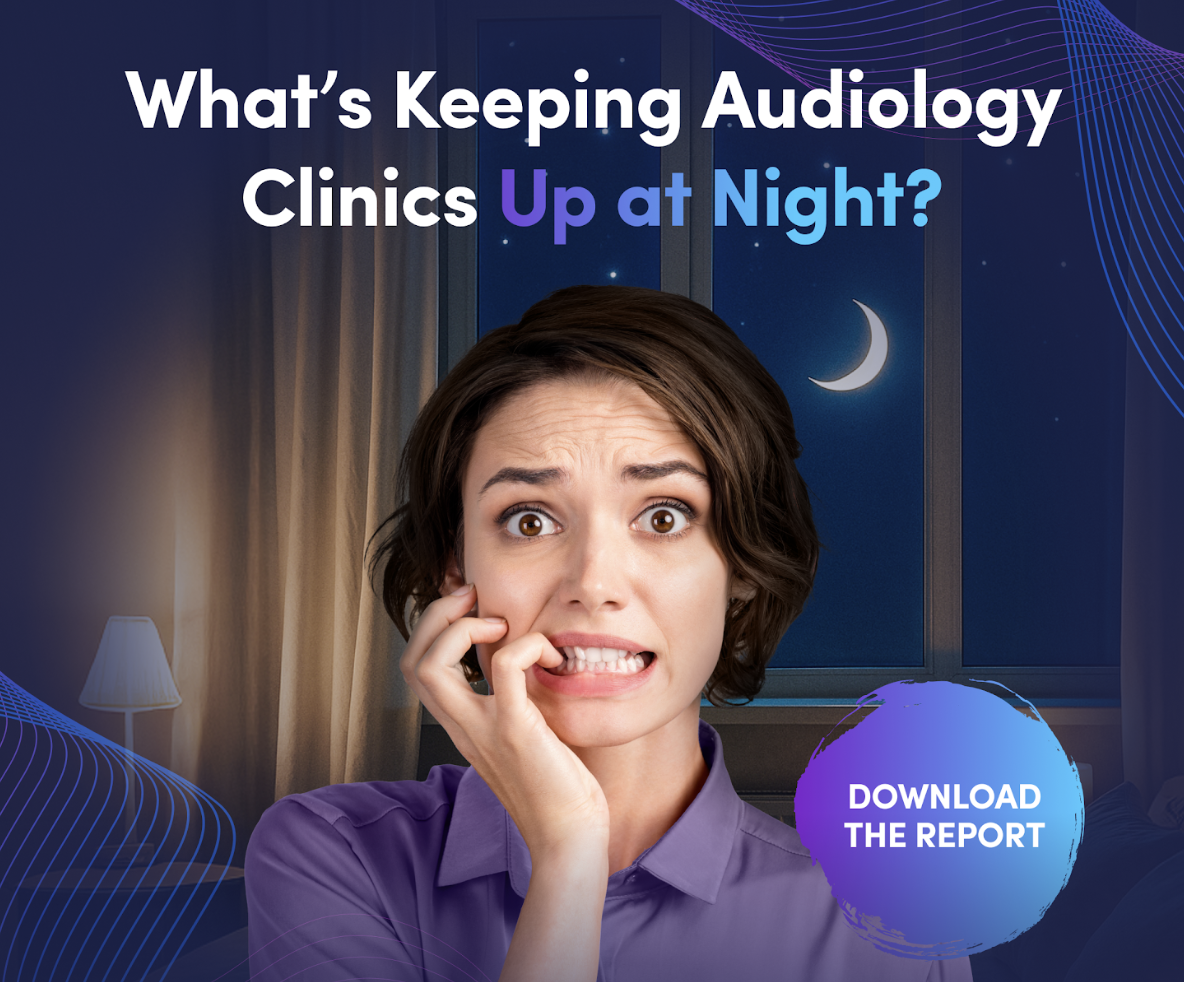It may seem, like much of healthcare, as though hearing care practices are facing more obstacles and challenges than ever – including a more competitive business environment. Competition, however, is not necessarily new to Audiology and the hearing care industry, yet today’s competition is varied and can come from a range of sources. Strong patient-provider relationships are the anecdotes to the challenges that hearing care practices can face.
To help, we chatted with Dr. Meredith Wilken, Audiologist and founder of Colorado Ear Care.
Hearing care patients have always had access to multiple avenues of purchasing hearing aids and devices which, according to Dr. Meredith Wilken, Audiologist and founder of Colorado Ear Care, has benefitted patients. “The field of Audiology has always been competitive and like so many other areas, healthy competition has led to improved services and patient care.”
Helping Patients Differentiate the Useful and Not-so-Useful
Options including over-the-counter hearing aids have been available since 1989, and while competition and over-the-counter alternatives may not be as new as we thought, new OTC regulations and fingertip access to information for patients certainly is. The new class of hearing aids, coupled with the wealth of information on the internet, can make it difficult to distinguish useful information from the not-so-useful. And it can be unrealistic to expect patients and their family members to accurately recognize the correlation between medically-based indications and certain symptoms.
With so much accessible information and increased product options, patients run the risk of becoming overconfident. In the example of making the decision to purchase an over-the-counter hearing aid, Wilken explains that while the devices will work for some patients, “Hearing loss has both a physical and neurological component. A professional examination and administration of diagnostic testing brings those issues to light. There is no one-size-fits all solution for hearing loss. A 90-year-old suspected of having hearing loss could have dementia or another cognitive issue that gets chalked up to ‘they can’t hear well’. My biggest concern for patients is that a medically treatable hearing loss or other factors besides hearing that need to be addressed will be overlooked or never discovered.”
Patient-centered Care
With a more informed patient population, the need for a strong patient-provider relationship is imperative – perhaps more so now than ever. Patients and their loved ones can read and research symptoms and probable causes and they can compare pricing and warranties, but there is no replacement for professional experts who not only understand the symptoms and potential solutions for varying degrees of hearing loss, but they also have the knowledge to recognize neurological components or other medical-based reasons for certain symptoms.
The digital age has proven to help destigmatize hearing loss and the use of hearing aids, yet too much information has the potential to hinder or unduly influence the decisions patients make.
The Digital Age Can Equate to Information Overload
Despite the fact that hearing loss is, for the most part, tested in the same ways it has been for decades, with the advent of the digital age and its many resources, an increasing number of Audiologists and hearing care practices are experiencing a paradigm shift in how they see and treat patients. Accompanying the digital age is the reality of information overload. Patients and their families can be overwhelmed with conflicting features and benefits of different solutions without always having a clear diagnosis or cause of the hearing loss. In addition to a patient-centered business model, today’s successful hearing care practices help to ease the information overload by providing straightforward educational resources that are relevant to their specific symptomology.
How does a hearing care practice navigate the information overload their patients are accessing? “I tell patients if it sounds too good to be true, it most likely is,” said Wilken. By understanding that while the internet has changed the way patients receive information, the missing component is the provider relationship. The most prolific website or online resource will not be able to replace a face-to-face conversation with a professional who sits, listens, and examines a patient. “Our jobs have evolved over the years to becoming more of an educational resource than in years past. In addition to healthcare, we are helping patients sift through the information overload.” This is an opportune time for practices to place their patients at the center of their operations.
Patient-centric approaches are the keys to building and sustaining lasting relationships. Below are five key steps to implementing patient-centered workflows in your hearing care practice, regardless of your budget.
Five Steps to Implementing Patient-centered Workflows
- Understand Your Patient Population: The nation’s population is aging, and aging is often accompanied by hearing loss. Patients are more informed due to the internet, but they don’t yet know what they don’t know. Hearing care professionals who take the time to listen and get to know their patients and understand their concerns will soon discover they offer more value than the ‘one-size-fits-all’ solutions.
- Build a Patient-Centered Culture: A patient-centered practice begins with the mission of your office or company. Provide training so employees learn the nuances of speaking politely, professionally, and personally to every patient and to glean information before appointments so everyone has clear expectations. Open communication will prevent a scenario often experienced in other aspects of healthcare where a 90-minute problem is squeezed into a 15-minute time slot.
- Put Yourself in Your Patient’s Shoes: A patient-centered practice means that everyone in the office knows what it feels like to be a patient in your office. Sit in your waiting room. How is the lighting? Are the chairs comfortable? How easy is it to see and hear your front office staff at check-in and check-out? How long do patients typically wait for the Audiologist? Is the exam room comfortable? Your office looks and feels differently from the patient’s perspective, and it is imperative that everyone experience it as a patient would.
- Maintain the Patient Connection: A relatively simple step that every office staff can take is to implement more follow up after patients leave the office. Often in healthcare there is little-to-no follow up from providers and it is seldom individualized. Audiology practices have opportunities to follow up with reminders about checkups, warranties, patient birthdays, etc. Block admin time for front-office staff to have time to make quality follow up connections and ask patients how their experience was in the office and be prepared to follow up when a patient is unhappy with their experience.
- Position Your Practice as Hearing Care Experts: Patients can easily have information overload from the internet which can result in the inability to pinpoint quality resources. Provide up-to-date and relevant educational resources in your office and on your website that are easy for patients to see and access. By providing a range of topics, patients who may be feeling anxious about the financial implications of hearing care or stigmatized about the potential of wearing a hearing aid can be reassured and educated with quality information.
Establishing and supporting quality patient relationships is paramount to delivering top quality hearing care services and building a sustainable practice. “At the end of the day,” Wilken concluded, “the patient-provider relationship is the cornerstone of a vital, successful practice. When you view changes to your landscape as opportunities rather than threats, your practice will thrive. Putting patients first is the way to do that.”



